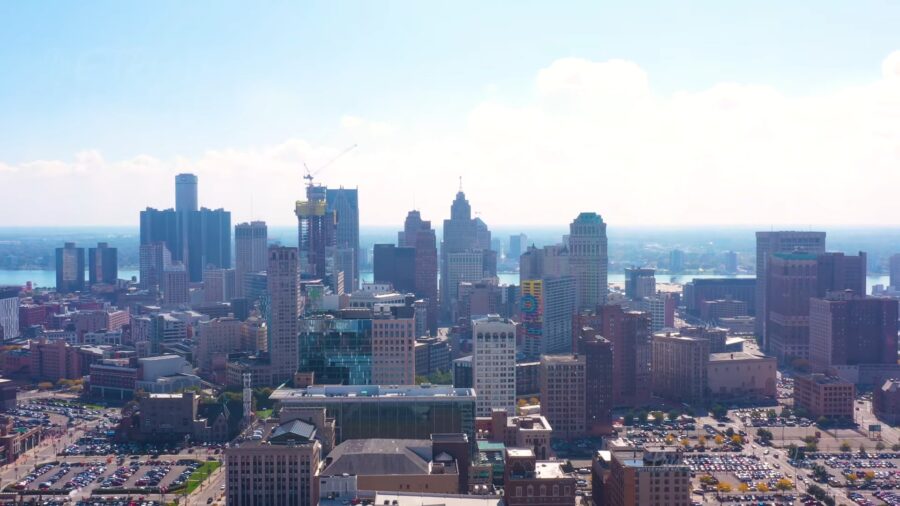Michigan has several cities that consistently rank among the most dangerous in the nation, based on crime statistics. Factors like poverty, unemployment, and strained local resources contribute to higher rates of violent crime in certain areas.
Cities such as Detroit, Highland Park, and Saginaw often top the list due to a combination of socioeconomic challenges and long-standing crime trends.
By examining crime data, it’s possible to identify patterns and understand why some Michigan cities struggle with safety more than others. Here’s a closer look at the most dangerous cities in the state and what drives their crime rates.
Table of Contents
ToggleCrime Data in Michigan Cities
| Rank | City | Population | Violent Crimes | Property Crimes | Total Crimes | Chances of Becoming a Victim |
|---|---|---|---|---|---|---|
| 10 | Harper Woods | 15,492 | 97 | 720 | 817 | 1 in 21 |
| 9 | Pontiac | 61,606 | 624 | 1,082 | 1,706 | 1 in 99 |
| 8 | Jackson | 32,188 | 352 | 1,136 | 1,488 | 1 in 88 |
| 7 | Albion | 7,700 | 89 | 298 | 387 | 1 in 86 |
| 6 | Kalamazoo | 72,873 | 1,124 | 3,440 | 4,564 | 1 in 65 |
| 5 | Muskegon Heights | 10,730 | 175 | 335 | 510 | 1 in 56 |
| 4 | Detroit | 635,000 | 12,774 | 28,227 | 41,001 | 1 in 49 |
| 3 | Highland Park | 10,978 | 180 | 330 | 510 | 1 in 26 |
| 2 | Saginaw | 49,892 | 940 | 919 | 1,859 | 1 in 46 |
| 1 | Benton Harbor | 8,943 | 239 | 337 | 576 | 1 in 29 |
10. Harper Woods – 6.40 per 1000 People
Harper Woods faces significant challenges with crime. It made our list of most dangerous cities in Michigan and is currently ranked in tenth place. The city’s violent crime rate is currently at 6.40 per 1000 people, as NeighborhoodScout states.
Proximity to Detroit contributes to Harper Woods’ crime rates, as issues in the larger city often spill over into its neighboring communities. Recently, Detroit’s investment in tackling community-based violence will certainly impact Harper Woods.
The city faces significant challenges, including widespread poverty and high unemployment rates, which create an environment where crime can flourish.
- Population: 15,492
- Violent Crimes: 97
- Property Crimes: 720
- Total Crimes: 817
- Chances of Becoming a Victim: 1 in 21
Violent Crime Rate
NeighborhoodScout also reported that Harper Woods has a violent crime rate of 6.40 per 1,000 residents, which includes crimes like assault, robbery, and murder. While high compared to national averages, it’s slightly below the city’s property crime rate.
Year-over-Year Crime Increase
Crime in Harper Woods has increased by 15% year over year, driven mainly by property crimes, as per AreaVibes.
Motor Vehicle Theft
Statistics show that the city experiences a high rate of motor vehicle theft, with residents having a 1 in 49 chance of having their vehicle stolen.
9. Pontiac – 10.09 per 1000 People
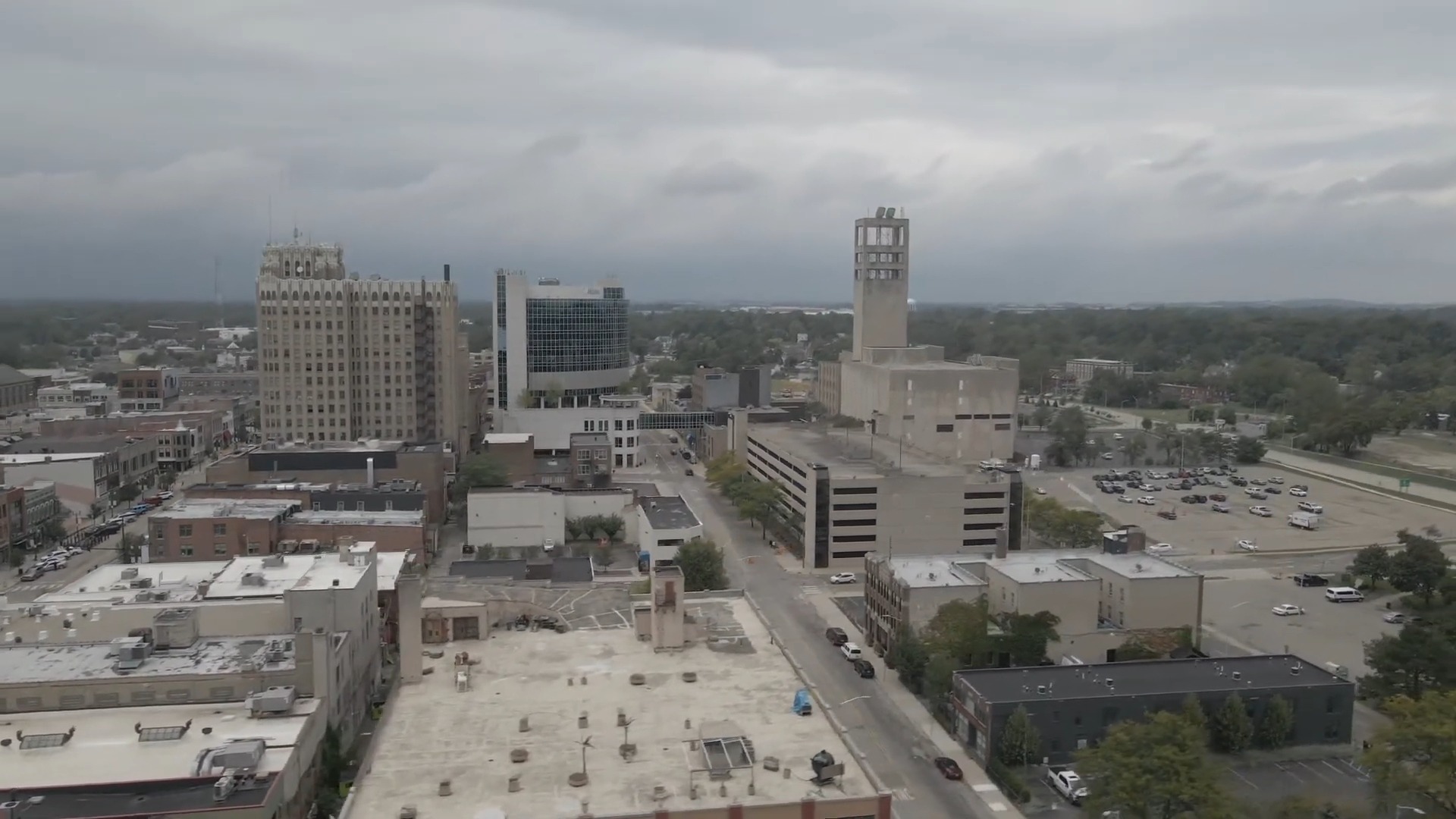
Pontiac is plagued by high crime rates despite its historical significance. The city’s violent crime rate is 10.09 per 1000 people, with a violent crime rate 177% higher than the national average according to AreaVibes.
Pontiac faces significant challenges with both violent and property crimes, contributing to its reputation as one of the most dangerous places in Michigan.
Violent crimes, including assault, robbery, and murder, are alarmingly common, while property crimes, such as burglary and theft, further erode the sense of security within the community.
Economic instability, high poverty rates, and limited employment opportunities create an environment where crime can thrive. The lack of access to quality education and job opportunities further perpetuates the cycle of poverty and crime in the city.
- Population: 61,606
- Violent Crimes: 624
- Property Crimes: 1,082
- Total Crimes: 1,706
- Chances of Becoming a Victim: 1 in 99
Violent Crime Rate
The violent crime rate in Pontiac is 12 per 1,000 residents, which is significantly higher than the national median of 4 per 1,000 residents, according to NeighborhoodScout.
Property Crime Rate
Statistics also show that property crimes in Pontiac occur at a rate of 17.5 per 1,000 residents. These crimes include burglary, motor vehicle theft, and larceny.
8. Jackson – 11.34 per 1000 People
Activity for August 2-4, 2024. Officers responded to 223 calls for service, made 25 arrests, and 58 traffic stops. https://t.co/qk9CqivFXx
— Jackson Police Dept. (@Jackson_MI_PD) August 5, 2024
Jackson is one of the most dangerous cities in Michigan, without a doubt. The city’s violent crime rate is 11.34 per 1000 people, with 7 murders, 33 robberies, and 277 assaults, as per NeighborhoodScout.
Additionally, property crimes, including 178 burglaries and 736 thefts, are significant concerns.
The lack of access to quality education and job opportunities further perpetuates the cycle of poverty and crime in the city.
Educational resources are often insufficient, leaving many young people without the necessary skills to pursue higher education or gainful employment. At the same time, the city faces problems with discrimination in schools.
This educational deficit limits their prospects and increases the likelihood of engaging in criminal behavior.
Without adequate education and job opportunities, individuals find it difficult to break free from the cycle of poverty, creating a persistent problem for the community.
- Population: 32,188
- Violent Crimes: 352
- Property Crimes: 1,136
- Total Crimes: 1,488
- Chances of Becoming a Victim: 1 in 88
Overall Crime Rate
Crime Grade statistics show that Jackson has a high overall crime rate, with 48 incidents per 1,000 residents. This makes it one of the most dangerous cities in the U.S., with residents having a 1 in 21 chance of becoming a victim of a crime.
Property Crime
Statistics also show that Jackson’s property crime rate is 36.61 per 1,000 residents. This includes theft, burglary, motor vehicle theft, and arson.
7. Albion – 11.68 per 1000 People
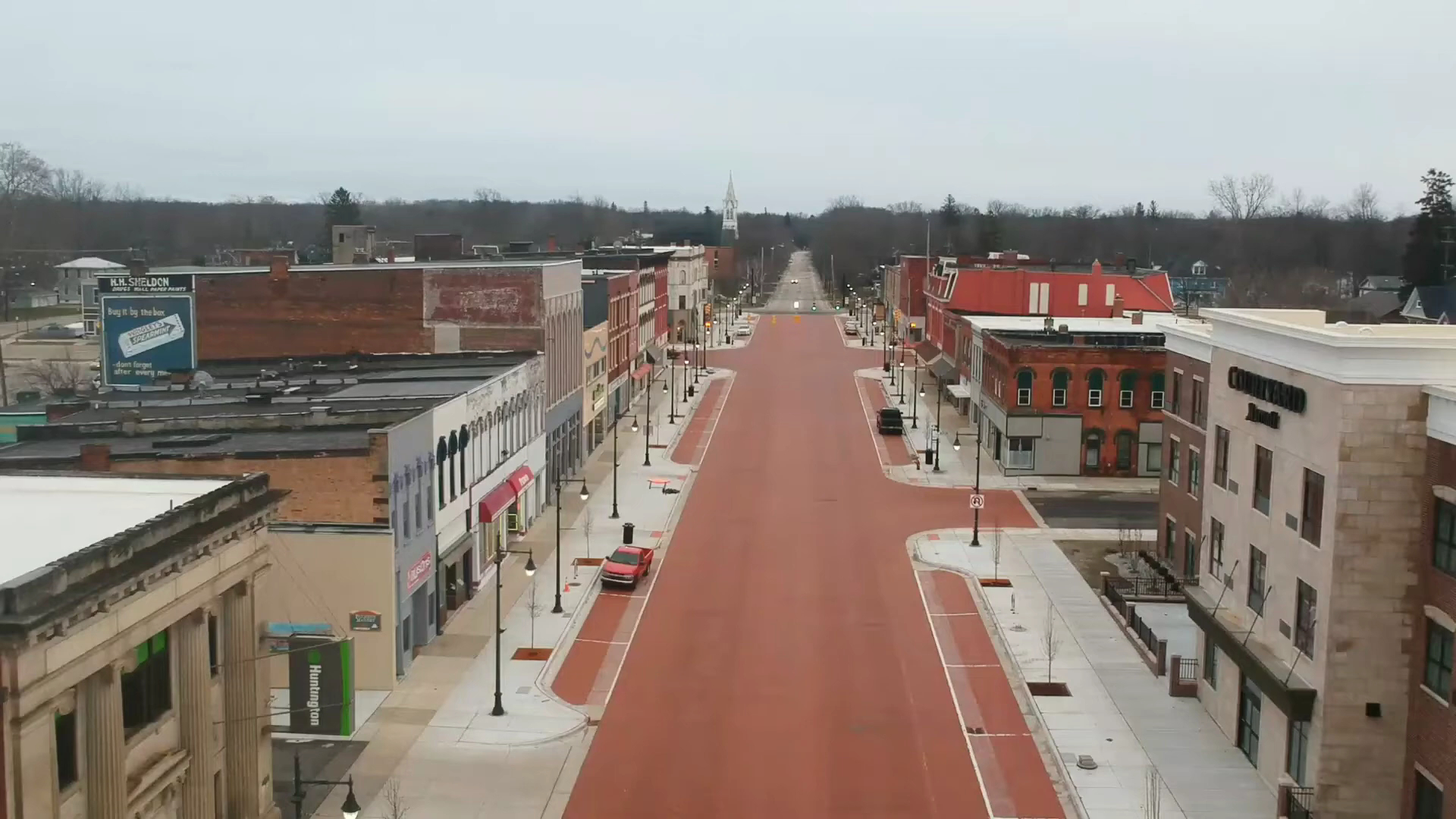
Albion is one of the most dangerous cities in Michigan because faces significant challenges with various types of crime.
The city’s violent crime rate is 11.68 per 1000 residents, with a violent crime rate 196% higher than the national average.
Also, as AreaVibes stats show, Albion’s total crime rate is 50.77 crimes per 1,000 residents, which is 105% higher than the national average. The city is only safer than 2% of U.S. cities.
Despite its small-town atmosphere, Albion’s high crime rates overshadow its community.
The economic instability in Albion leads to a decline in public services and infrastructure.
The town’s limited resources mean that essential services, such as law enforcement, social services, and community programs, are often underfunded and understaffed.
This lack of support makes it difficult to effectively address crime and provide assistance to those in need.
As a result, the cycle of poverty and crime continues, creating a challenging environment for residents and law enforcement alike.
- Population: 7,700
- Violent Crimes: 89
- Property Crimes: 298
- Total Crimes: 387
- Chances of Becoming a Victim: 1 in 86
Property Crime Rate
Property crimes in Albion occur at a rate of 39.10 per 1,000 residents, with burglary and theft being common offenses, as per NeighborhoodScout.
Chance of Becoming a Victim
According to statistics, in Albion, residents have a 1 in 22 chance of becoming a victim of any crime and a 1 in 86 chance of becoming a victim of a violent crime.
Assault and Robbery
Albion experiences about 5.3 assaults and 0.73 robberies per 1,000 residents annually, Crime Grade statistics show.
6. Kalamazoo – 15.42 per 1000 People
KDPS is taking action against illegal Mobile Nuisance Parties (MNP). Using tech to flag participating vehicles, we obtain seizure orders and tow them later in the week. Whether the owner’s involved or not, if the vehicle participated, it gets towed. #KDPS #PublicSafety #MNP pic.twitter.com/ljNfhrjoPa
— KDPS (@KalPublicSafety) August 2, 2024
Kalamazoo is another city grappling with high crime rates. The Kalamazoo violent crime rate stands at 15.42 per 1000 residents.
In 2023, Kalamazoo experienced 21 murders, 126 robberies, and 878 assaults.
It must be said that the number of homicides has seen an increase of 91%, according to MLive.
Additionally, property crimes, including 641 burglaries and home invasions, are significant concerns.
As per DataUSA, the high unemployment and poverty rates in Kalamazoo, roughly 27%, are major contributing factors to its crime issues. Brookings reports that 40% of the population lives in highly concentrated poverty neighborhoods.
Economic instability often leads to higher crime rates as individuals struggle to meet their basic needs.
The lack of access to quality education and job opportunities further perpetuates the cycle of poverty and crime in the city.
- Population: 72,873
- Violent Crimes: 1,124
- Property Crimes: 3,440
- Total Crimes: 4,564
- Chances of Becoming a Victim: 1 in 65
Violent Crime Rate
Kalamazoo has a violent crime rate of 5.24 per 1,000 residents, which includes assaults (3.87 per 1,000), robberies (0.56 per 1,000), rapes (0.78 per 1,000), and murders (0.03 per 1,000), as per Crime Grade.
Property Crime Rate
Crime Grade also reports that property crimes are more common, with a rate of 14.29 per 1,000 residents. This includes theft (8.99 per 1,000), vehicle theft (1.43 per 1,000), and burglary (3.67 per 1,000).
Neighborhoods with High Crime Rates
According to AreaVibes, the most dangerous areas in Kalamazoo include the West Douglas neighborhood, which has 219% more violent crime than the city average, and the Northside neighborhood, which has 194% more.
5. Muskegon Heights – 17.79 per 1000 People
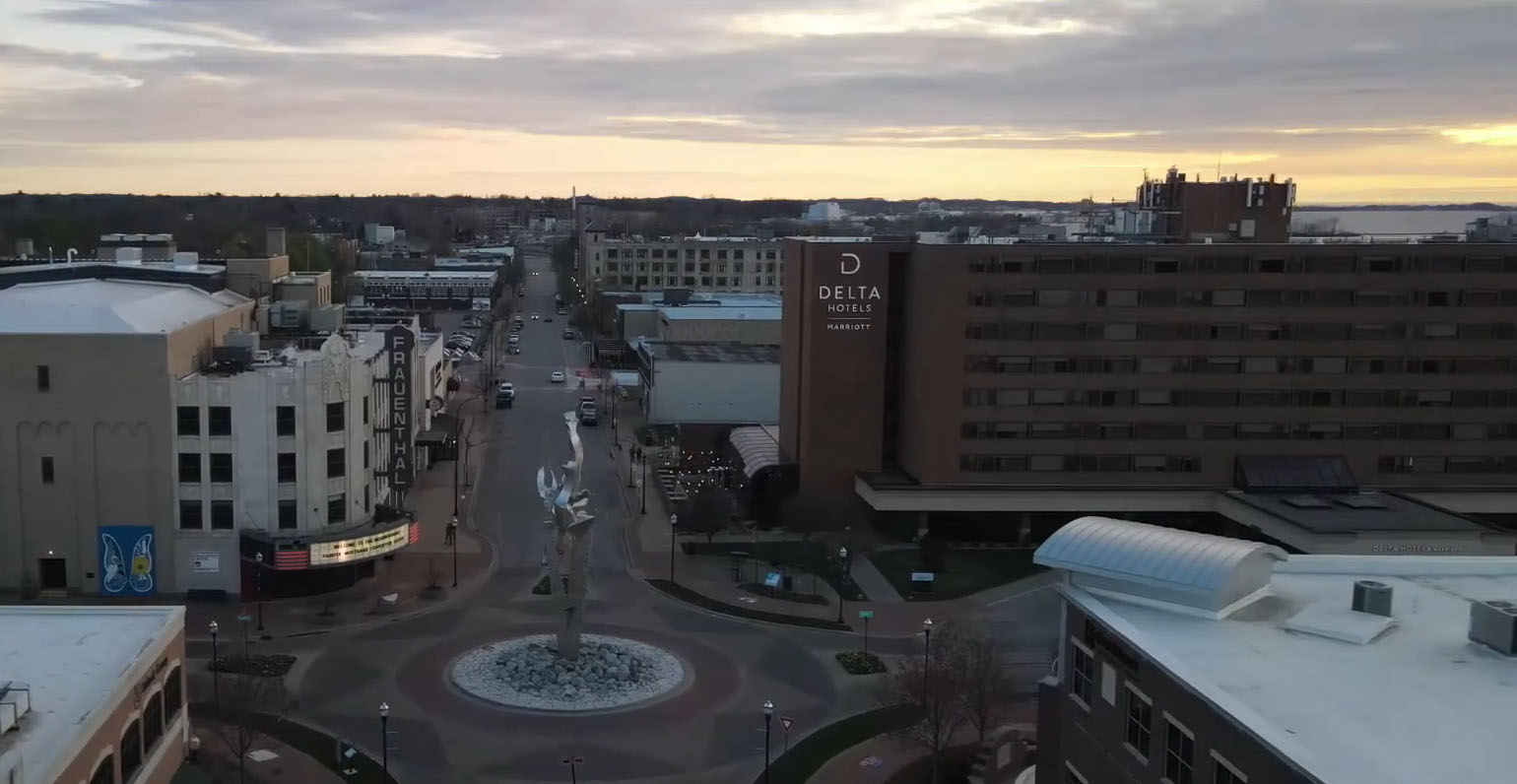
As one of the most dangerous cities in Michigan, Muskegon Heights has a disproportionately high violent crime rate of 17.79 per 1000 people.
The city faces significant issues with gun violence and home invasions, whose rate is at a mind-spinning 34.05, contributing to its reputation as one of the most dangerous places in Michigan.
The high crime rate in Muskegon Heights is particularly concerning given its small population. In 2022, the overall crime rate was 330% higher than the federal average, according to WBCKfm.
This disparity highlights the severity of the crime issues facing the city.
Socioeconomic challenges are key factors contributing to the high crime rates, such as poverty and limited employment opportunities.
The lack of resources and support systems for residents exacerbates these problems, making it difficult for the community to address the root causes of crime.
- Population: 10,730
- Violent Crimes: 175
- Property Crimes: 335
- Total Crimes: 510
- Chances of Becoming a Victim: 1 in 56
Overall Crime Rate
The crime rate in Muskegon Heights is 4,987.9 per 100,000 residents, making it one of the more dangerous cities in Michigan, as per Tuko.
Property Crime
Tuko also reported that property crime rates are also high, with a score of 85.8 out of 100, indicating frequent occurrences of theft, burglary, and motor vehicle theft.
Decrease in Crime
Despite these high figures, overall crime in Muskegon Heights has decreased by 4% compared to previous years, as per AreaVibes.
4. Detroit – 20.59 per 1000 People
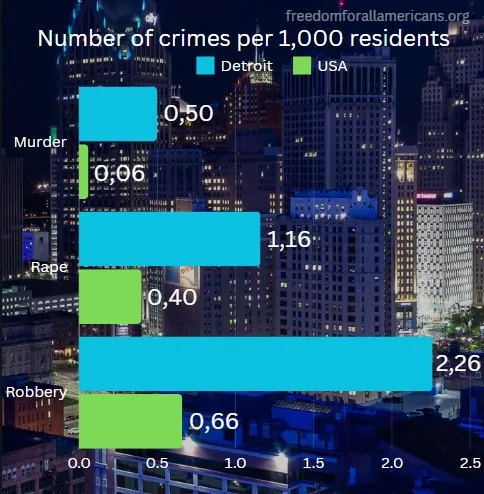
Detroit, with a population of approximately 635,000, holds historical significance as a former powerhouse of the U.S. automotive industry. Seeing a Detroit crime map is a scary thing.
It is unfortunate to be one of the most dangerous cities in America and Michigan. The city’s violent crime rate stands at a staggering 20.59 per 1000 people, as per statistics.
The Detroit murder rate is at 41 homicides per 1000 residents, as Freep points out.
In 2023 alone, Detroit experienced 252 murders, way above national average, 1,392 robberies, and 11,096 assaults.
It is important to know that 252 murders are the lowest number since 1966, according to DetroitMI, but some neighborhoods still experience higher numbers.
- Population: 635,000
- Violent Crimes: 12,774
- Property Crimes: 28,227
- Total Crimes: 41,001
- Chances of Becoming a Victim: 1 in 49
Overall Crime Rate
According to Safe and Sound, Detroit reports a crime rate of 66.09 incidents per 1,000 residents, significantly higher than the national average.
Property Crime Rate
Property crimes, including burglary and motor vehicle theft, occur at a rate of 45.50 per 1,000 residents, NeighborhoodScout reports.
Motor Vehicle Theft
The chance of having a vehicle stolen in Detroit is 1 in 65, one of the highest rates in the nation, as per stats.
Early 2025 Trends
As of early 2025, Detroit has reported significant declines in various crime metrics for the year 2024:
- Homicides: AP News reports that the city recorded approximately 203 homicides in 2024, marking a 19% decrease from the 252 homicides in 2023. This is the lowest number since 1965, when there were 188 homicides.
- Non-fatal Shootings: There were 606 non-fatal shootings in 2024, a 25% reduction from the 804 incidents in 2023, as per City of Detroit.
- Overall Violent Crime: Detroit saw a 7.2% decline in overall violent crime, with 11,681 incidents recorded in 2024, the lowest since the 1960s.
3. Highland Park – 20.79 per 1000 People
The Highland Park Police Department said no one is in custody at this time. Michigan State Police is now investigating the double shooting. https://t.co/S9bHvQLD5q pic.twitter.com/R2sfNTHh6C
— FOX 2 Detroit (@FOX2News) May 30, 2024
Highland Park is the third most dangerous city in Michigan.
The crime rate in Highland Park is 20.79 per 1000 people, with 6 murders, 25 robberies, and 164 assaults reported.
Urban decay and abandoned buildings contribute to the city’s high crime rates. Since 1930, the city has lost 80% of its population, according to WXYZ.
The presence of numerous abandoned buildings and widespread urban decay signals a lack of investment and maintenance in the community.
Abandoned buildings can become hotspots for drug use, illegal squatting, and other illicit activities, creating dangerous areas within the city where crime can go unchecked.
- Population: 10,978
- Violent Crimes: 180
- Property Crimes: 330
- Total Crimes: 510
- Chances of Becoming a Victim: 1 in 26
Violent Crime Rate
According to Crime Grade, the violent crime rate is 18.30 per 1,000 residents, significantly higher than the national average. Assaults are the most common violent crime, with 13.62 incidents per 1,000 people.
Property Crime Rate
Crime Grade also reported that property crimes occur at a rate of 52.88 per 1,000 residents. The most prevalent property crimes include theft (37.37 per 1,000) and burglary (10.95 per 1,000).
Motor Vehicle Theft
According to NeighborhoodScout, Highland Park has one of the highest rates of motor vehicle theft in the country, with residents facing a 1 in 88 chance of having their car stolen.
2. Saginaw – 21.62 per 1000 People
Saginaw has numerous challenges with crime. The city’s violent crime rate is 21.62 per 1000 people, which is one of the highest in the nation, according to statistics.
We can find a report by SVSU from 2017, when the situation wasn’t as problematic. Sadly, it has gone worse since.
The high crime rate in Saginaw can be attributed to several interrelated factors, including economic instability and limited resources.
The city has faced significant economic challenges over the years, leading to high levels of poverty and unemployment.
These economic hardships create an environment where crime can spread, as individuals and families struggle to meet their basic needs and may resort to illegal activities out of desperation.
- Population: 49,892
- Violent Crimes: 940
- Property Crimes: 919
- Total Crimes: 1,859
- Chances of Becoming a Victim: 1 in 46
Overall Crime Rate
According to NeighborhoodScout, Saginaw’s total crime rate is 43.81 per 1,000 residents, which is much higher than the national average, placing it in the 13th percentile for safety. This means 87% of U.S. cities are safer than Saginaw.
Property Crime Rate
NeighborhoodScout research also shows that property crimes in Saginaw, including burglary, theft, and motor vehicle theft, occur at a rate of 21.14 per 1,000 residents. Your chance of being a victim of property crime is about 1 in 47.
1. Benton Harbor – 26.72 per 1000 People
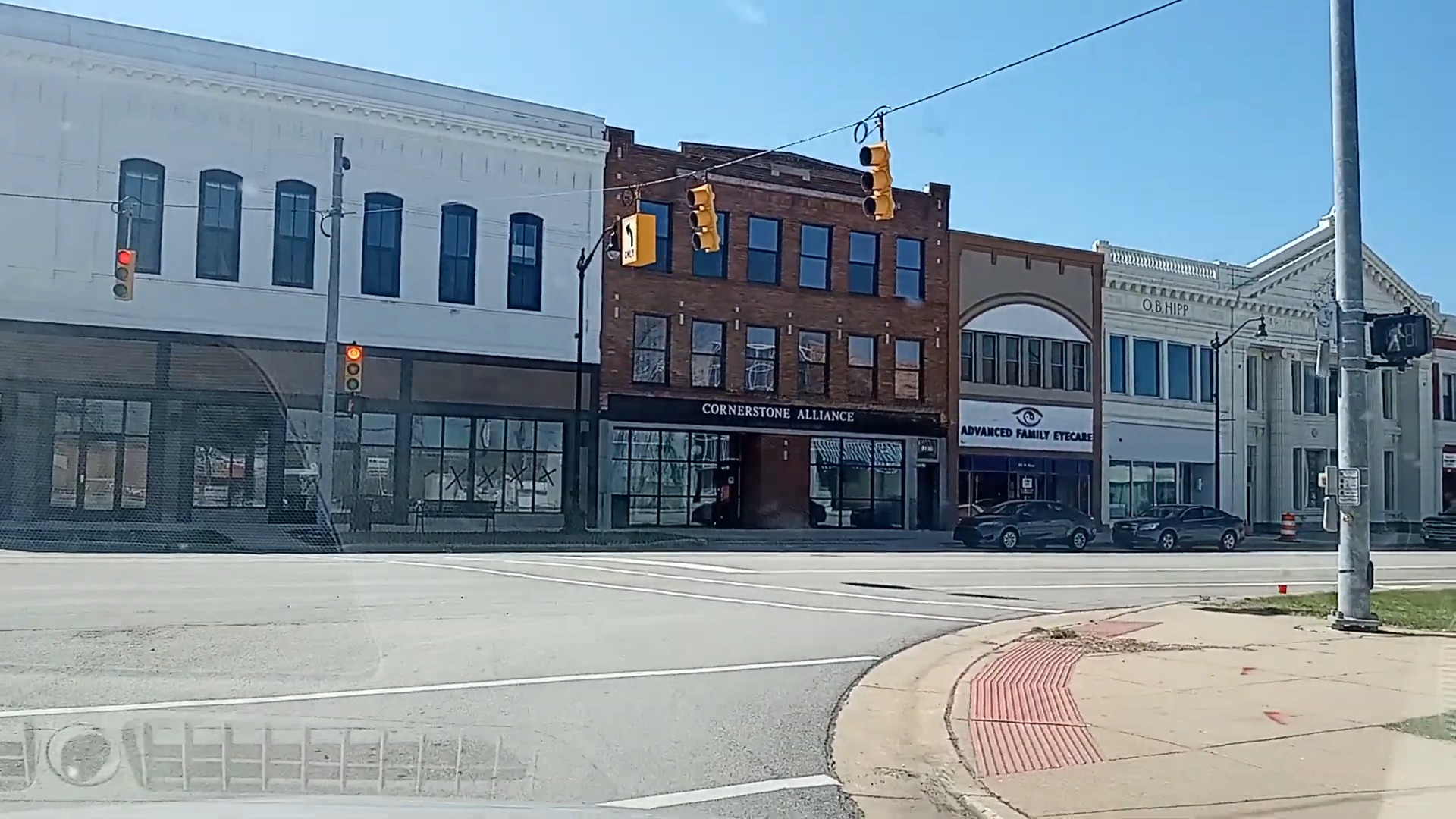
Benton Harbor ranks as the most dangerous city in Michigan. Many are not certain why is Benton Harbor so dangerous. Well, the numbers are more than clear.
The city’s violent crime rate is alarmingly high at 26.72 per 1000 people.
In 2023, Benton Harbor reported 4 murders, 15 robberies, and 196 assaults, along with 56 burglaries.
One of the primary issues facing Benton Harbor is its high poverty rate, which is close to 44%, according to FordSchool report. Limited employment opportunities contribute to economic hardship for many residents, which can lead to increased crime rates.
The lack of resources and support systems further exacerbates these challenges, making it difficult for the community to break the cycle of poverty and crime.
- Population: 8,943
- Violent Crimes: 239
- Property Crimes: 337
- Total Crimes: 576
- Chances of Becoming a Victim: 1 in 29
Total Crime Rate
Benton Harbor has a total crime rate of 6,365 per 100,000 residents, which is 169% higher than the national average, according to AreaVibes.
Property Crime Rate
Tuko reports that Benton Harbor’s property crime rate stands at 38.12 per 1,000 residents. This includes crimes like burglary, larceny, and motor vehicle theft.
Yearly Crime Trend
Crime in Benton Harbor has increased by approximately 35% from the previous year, according to NeighborhoodScout.
Expanded map of dangerous hotspots in Michigan
The State of Michigan Tackles Crime
Now that we finished the list of the most dangerous cities in Michigan, let us talk about what the state does to tackle these issues.
Michigan is facing a significant challenge with a high number of unsolved homicides, ranking sixth in the nation for cold cases, which was pointed out by CBSNews.
To address this issue, the state has allocated $1 million in funding aimed at tackling these cases, with significant portions directed to the Michigan State Police’s Forensic and Special Investigation Divisions and to university cold case programs.
These initiatives not only provide critical resources for investigating these crimes but also offer valuable real-world experience for students involved in the programs.
For instance, Western Michigan University’s Cold Case Program has been instrumental in resolving cases that have remained unsolved for decades, highlighting the importance of sustained and focused investigative efforts.
Simultaneously, Detroit, a city historically plagued by high rates of violent crime, has seen a remarkable decline in homicides and gun violence.
Police Chief James White pointed out the importance of mental health interventions and community trust, implementing programs like the Crisis Intervention Team to de-escalate potentially violent situations.
Additionally, the city’s “summer surge” plan and increased police presence in high-risk areas have contributed to the reduction in crime.
Detroit’s success also stems from the concerted efforts of community organizations and federal partnerships.
Programs like FORCE Detroit have been pivotal in mediating conflicts and providing support to those most at risk of gun violence.
Furthermore, the judicial system’s proactive measures to address the backlog of felony cases and the U.S. Attorney’s outreach initiatives have played crucial roles in maintaining and enhancing public safety.
Methodology
For analysis of the most dangerous cities in Michigan, I rely on the crime data annually published by the FBI and city police. This data is released in two key segments: a preliminary overview focused on the nation’s largest cities, followed by a detailed year-end report.
- Per Capita Violent Crime Rates
- Per Capita Property Crime Rates
In pursuing a nuanced examination, our study predominantly concentrated on cities throughout Michigan for a more rounded state-wide perspective.
Summary
The ten cities highlighted in this outline represent some of the most dangerous places in Michigan, each facing unique challenges related to crime.
Addressing the root causes of crime, such as poverty, unemployment, and lack of educational opportunities, is essential in creating safer communities.
References
- neighborhoodscout.com – Michigan Crime Rates and Statistics
- clickondetroit.com – Detroit’s investment in community-based violence prevention leads to significant drop in crime rates
- areavibes.com – Most Dangerous Cities in Michigan (2024)
- mlive.com – New policy aims to combat bias, discrimination at Jackson Public Schools
- crimegrade.org – The Safest and Most Dangerous Places in Michigan
- freep.com – Albion College works to revitalize struggling downtown
- brookings.edu – Free college is not enough: The unavoidable limits of the Kalamazoo Promise
- wbckfm.com – Michigan’s Most Violent City Isn’t Where You Think
- tuko.co.ke – The most dangerous cities in Michigan with their crime rates in 2024
- detroitmi.gov – Detroit ends 2023 with fewest homicides in 57 years, double-digit drops in shootings and carjackings thanks to DPD, federal, county, state, and community partnerships
- freep.com – Detroit records fewest homicides since 1966, but ‘we’ve got a lot of work to do’
- getsafeandsound.com – Shocking Detroit Crime Rate, Statistics & Trends
- wxyz.com – “There’s nothing left.” After decades of decline, Highland Park fights for a future
- svsu.edu – SVSU analysis shows Saginaw has seen major gains in safety
- sites.fordschool.umich.edu – Michigan Poverty & Well Being Map: Southwest Region
- cbsnews.com – Michigan state funding aims to tackle unsolved homicide cases
- michiganpublic.org – Mayor, police chief: Detroit violent crime is down, but mental health crisis continues unabated
Related Posts:
- Most Dangerous Cities in Mexico 2025 - Top 10 Places…
- Most Dangerous Cities in Virginia - 10 Places with…
- 10 Most Dangerous Cities in Texas in 2025 You Should…
- 26 Most Dangerous Cities in US You Should Know About…
- Most Dangerous Cities in Ohio - Top 10 Risky Areas…
- 10 Most Dangerous Cities in Florida in 2025 to Watch Out For

